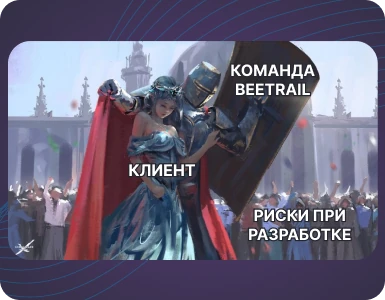Cargo service development: from idea to launch
Development cargo transportation service: from idea to launch
In 2023, the global market for digital services for searching and organizing transportation reached $4.2 billion. According to forecasts, by 2026 it will grow to $7.5 billion, and by 2034 it may exceed $60 billion. This growth says one thing: logistics is rapidly going online.
The first impetus for these changes was the pandemic: then businesses had to restructure their supply chains and find ways to work without unnecessary contacts. Currently, the demand for online logistics is fueling the growth of e-commerce. More and more purchases are being made online, which means more orders, more complicated routes, higher requirements for speed and accuracy. To cope with this flow, you need flexible, fast and understandable tools.
This is how digital platforms come to the fore: cargo transportation services that bring together cargo owners and carriers in a single system. They make it possible to speed up the process, reduce costs and make logistics convenient for both customers and drivers.
In this article, we'll look at how the digital transportation market works, what functions are needed in the application, how development is going, and how such a service can be profitable.
Digital transportation market: trends and audience
Digital transportation market: trends and audience
Everyone who has ever dealt with organizing transportation knows how complicated this process is. Here, accuracy in routes, compliance with deadlines, correct paperwork and coordination between all participants are important. Even a small mistake can result in delivery failure or financial losses.
To avoid this, companies are looking for tools that make logistics management easier. Increasingly, this solution is becoming a cargo transportation application — a digital aggregator that is becoming a next-generation exchange that connects cargo owners and transport companies. It is where customers place orders, and carriers respond and receive orders directly.
Who will use this app
To understand how an app should work, you need to identify its target audience. In the case of a transportation search service, it is double:
1. Cargo owners
These are the ones who need to transport goods: companies, warehouses, shops or private customers. Their main needs are:
- Quickly find a free carrier with suitable transport.
- Understand the price in advance.
- See where the shipment is.
- Place orders without calls and paperwork.
It is important for them that the application is simple and reliable so that they can order cargo transportation without being distracted from their business.
2. Carriers
These are drivers and fleet owners. They are interested in something else:
- Get a stable flow of orders.
- Avoid idle runs.
- Clearly understand the cost, route and timing.
- Be able to keep records of orders and revenues.
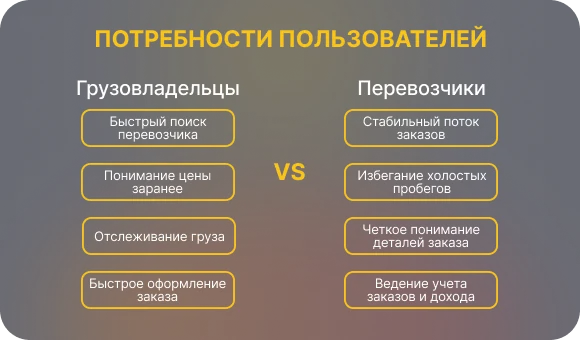
Many carriers are sole traders who work alone. They don't have a dispatcher or IT department, so trucking apps for drivers are especially in demand: such solutions combine navigation, access to orders, analytics, and everything you need for daily work on the route.
Market leaders: who did it (or not)
Market leaders: who did it (or not)
The digital cargo transportation market already has strong players to target. Let's see how their services work.
Uber Freight — “taxi for goods”
When Uber entered the cargo transportation market, it proposed the same principle as in a taxi: drivers and customers find each other through an app, without intermediaries. The service operates in the US and Europe and connects tens of thousands of drivers and customers.
What Uber Freight offers:
- Easy registration for drivers.
- Search and book in two clicks.
- Transparent payment without negotiations.
- The ability to track the cargo.
- Additional features: trailer rental, fuel discounts, analytics.
This is a complete ecosystem where participants receive not only orders, but also work management tools.
C.H. Robinson is the digital transformation of a logistics giant
C.H. Robinson is one of the largest transportation partners in the world, with revenues of about $24.7 billion in 2022. The company has been working as a classic freight forwarder for decades, but has been actively investing in digitalization in recent years. Its ecosystem includes its own Navisphere platform, a mobile app for carriers, and a Freightquote service that allows small businesses to independently calculate rates and order delivery with real-time tracking.
To stay competitive, C.H. Robinson is investing hundreds of millions of dollars in AI and service automation. Despite the fall in profits in 2023, the company continues to develop digital solutions and strengthen its market position.
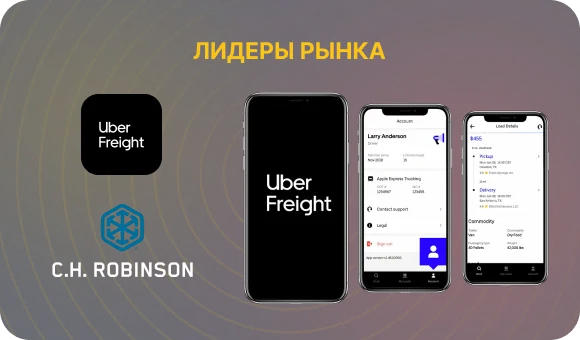
Russian market: digitalization is progressing, but unevenly
Digital logistics solutions are developing more slowly in Russia and the CIS countries than in the West, but interest in them is growing steadily. For a long time, cargo exchanges have remained the main tool for finding carriers, for example, the ATI.su website, which is still the largest platform on the market. This is a kind of cargo transportation service where you can place an order, check the counterparty and select a carrier by rating.
Mobile solutions are also emerging that are designed to replace classic exchanges. Thus, back in 2016, the startup Deliver tried to create a Russian analogue of Uber Freight — an application that connects customers and drivers directly. Such platforms facilitate access to orders and allow you to work without intermediaries, but have not yet been widely distributed.
The problem is that the market is very fragmented, and most processes are still done manually — through calls, messengers, and paper documents. This slows down work, increases costs and reduces transparency. At the same time, the demand for simple and reliable digital tools is growing, so interest in platforms that facilitate transportation is only increasing.
What's important: there is currently no one superleader among applications on the Russian market. This means that new services have a chance to carve out a large niche.
What features do you need in the trucking app
What features do you need in the trucking app
When a user installs a trucking service, they expect more than just a list of applications. It is important that it can be used to quickly solve specific problems: finding vehicles, arranging transportation, tracking cargo, and receiving payments. Therefore, the development takes into account the needs of all categories of users.
For cargo owners (customers who need to transport goods):
- Registration and personal profile with company details and contacts.
- Creating an application: specify the type of cargo, route, timing and budget.
- Vehicle search with filters by parameters — for example, load capacity, region, mode of transport.
- Compare and filter offers from carriers by cost, timing and rating.
- The ability to track cargo via GPS.
- Easy online payment with confirmation and check.
- Joint account management with partners and colleagues — setting access rights.
- A feedback system to rate performers after transportation is complete.
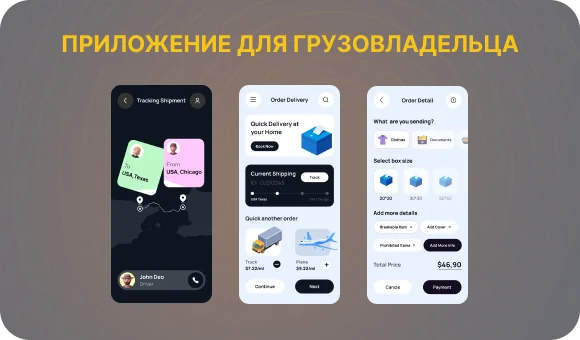
For carriers (drivers, entrepreneurs, transport companies):
- Registration with verification: uploading documents, licenses, TIN.
- Order catalog with filters by region, type of cargo and cost.
- Quick response to the application — without calls or approvals.
- Fleet management if there are several cars.
- Navigation and transport routes with map integration.
- Flight history with dates, routes and delivered goods.
- Financial analytics: revenue, flight history, cost accounting.
- New order notifications so you don't miss out on eligible flights.
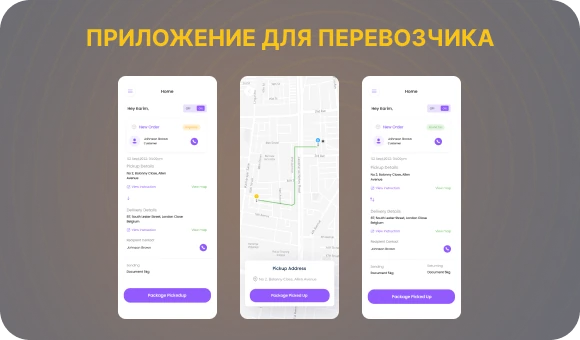
For the platform administration:
- Moderation: checking carriers, dealing with complaints.
- Analytics: order statistics by region, time, customer type.
- The ability to promptly support and protect user data.
This distribution makes it possible to create cargo transportation services that will be useful to all participants in the process: both those who transport and those who order.
How the service is developed: step by step
How the service is developed: step by step
The development of a digital service for cargo transportation is a sequential process in which not only technology is important, but also understanding the needs of real users. We will tell you about the main stages that the team goes through in creating a convenient and stable platform.
1. Research and planning
At the first stage, the team dives into the tasks of future users and determines exactly how the service will work. Here it is important not only to gather ideas, but also to understand the real needs of different parties.
What happens at this stage:
- Needs analysis: the work scenarios of cargo owners and carriers are being studied, and the main difficulties and demands are identified.
- Formulation of requirements: Based on the analysis, clear descriptions of what the application should be able to do are created.
- User stories development: simple stories help describe user behavior. For example:
— “I am a warehouse owner and want to quickly find the right vehicle for my cargo”
— “I am a driver and want to receive notifications about orders in my region”
- Prototyping: Preliminary screen layouts are being designed to show what the interface will look like and how the user will move around the platform.
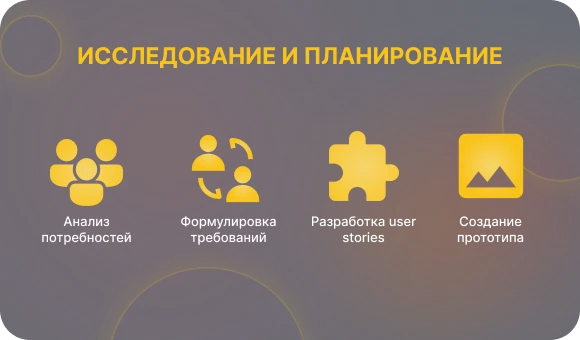
2. Design
When it becomes clear which features are really important, work begins on the appearance of the service. The priority is simplicity and convenience. In fact, logistics for cargo transportation is an application that becomes a daily work tool for drivers and managers. The speed of work and the accuracy of delivery depend on how clear and convenient it is.
When designing a design, key principles are taken into account:
- Easy navigation: the user immediately sees where to create an order, how to check the route, and where to contact the customer or carrier.
- Adaptability: the interface should be equally user-friendly on a smartphone, tablet and in the web version — some users work with the service on the go, others access the site from the office.
- Visual clarity: well-thought-out fonts, color accents, and contrast — so that the interface doesn't make you tired, but helps you focus on the task.
3. Development
The next step is to implement all the planned functions. The team is implementing:
- search and filter modes of transport and requests so that users can quickly find the offers they need;
- calculation of routes and costs — based on distance, cargo weight, type of transport;
- integrations with cards, payment systems, notification services and external partners.
At this stage, a reliable technical basis is being laid: it is important that the platform is stable and able to handle a large number of users.
4. Testing
Before launching the application, everything is carefully checked:
- Each function is tested — from creating an application to payment;
- load testing is carried out to make sure that the service does not “slow down”, even if many users work at the same time;
- It checks the work on different devices and in different browsers.
Testing allows us to make sure that the platform will be user-friendly and understandable regardless of where and how it is used.
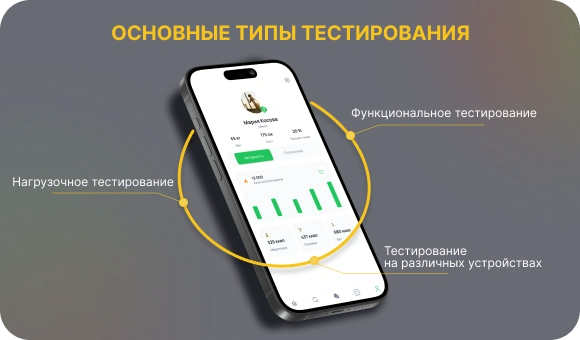
5. Launch and support
After completing all the steps, the service is available on the App Store, Google Play and via the web version. But the work doesn't end there.
The team tracks how users interact with the app, collects feedback, answers questions, and releases updates. With each such cycle, the service becomes more convenient, faster and more accurate to solve the problems of its users.
How to make money: monetization models
How to make money: monetization models
A cargo search service can earn money in various ways. Here are a few models:
Trade Fee
The classic option: the service deducts a percentage from each shipment. For example, a client pays 5,000 rubles, of which 250 rubles remain on the platform. It is convenient and transparent.
Subscription
Carriers can be given paid access to advanced features: search priority, access to large orders and exclusive offers outside public exchanges. The package may also include tools for efficient transport management, such as load accounting, flight tracking, and maintenance reminders. This can be a monthly subscription or an annual subscription.
Additional services
This includes:
- Opportunity to be promoted on the list — the carrier may pay to be above the competition.
- Advanced analytics: reports on revenue, average travel time, car load, order geography and price dynamics by destination.
- Legal support — document verification, contract templates.
- Integrations with 1C or other systems, which is especially important for business.
If you set the tariffs correctly, the service can generate income at all stages of interaction.
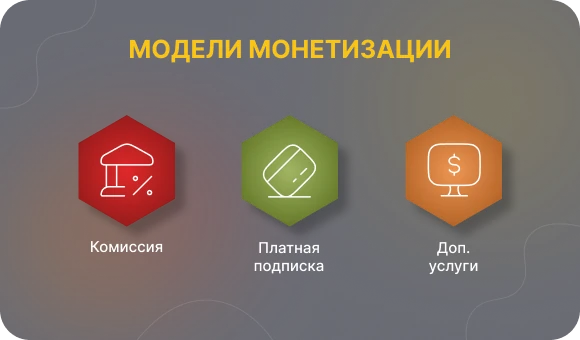
How to attract and retain users
How to attract and retain users
Development is only half the story. For the service to start working, you must find it and start using it. That is why marketing tools are important:
Engaging:
- SEO promotion — so that users can find exactly you when they search for “cargo transportation service”.
- Ads on Google and social networks — customized by region, type of audience.
- Partnerships with companies, such as warehouses or marketplaces.
Retention:
- Notifications about new orders, discounts, changes.
- Loyalty program — order fulfillment bonuses, ratings and the ability to earn points for future trips or discounts.
- Regular updates to keep the app up to date.
The more convenient the service is, the more users will be willing to return to it.
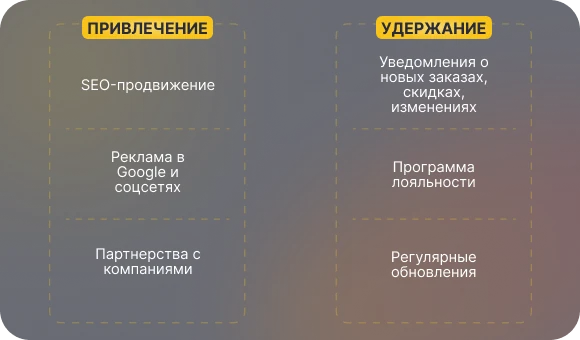
Conclusion: why you should launch your own service
Every trucking app idea can be successful if implemented correctly. We develop aggregators that connect cargo owners and carriers, ensuring convenience, transparency and efficiency.
From market analysis to platform launch, we create solutions that are ready for scaling.
Do you want an app that will take your logistics business to the next level? Contact us and we will develop an aggregator that is perfect for your needs!






